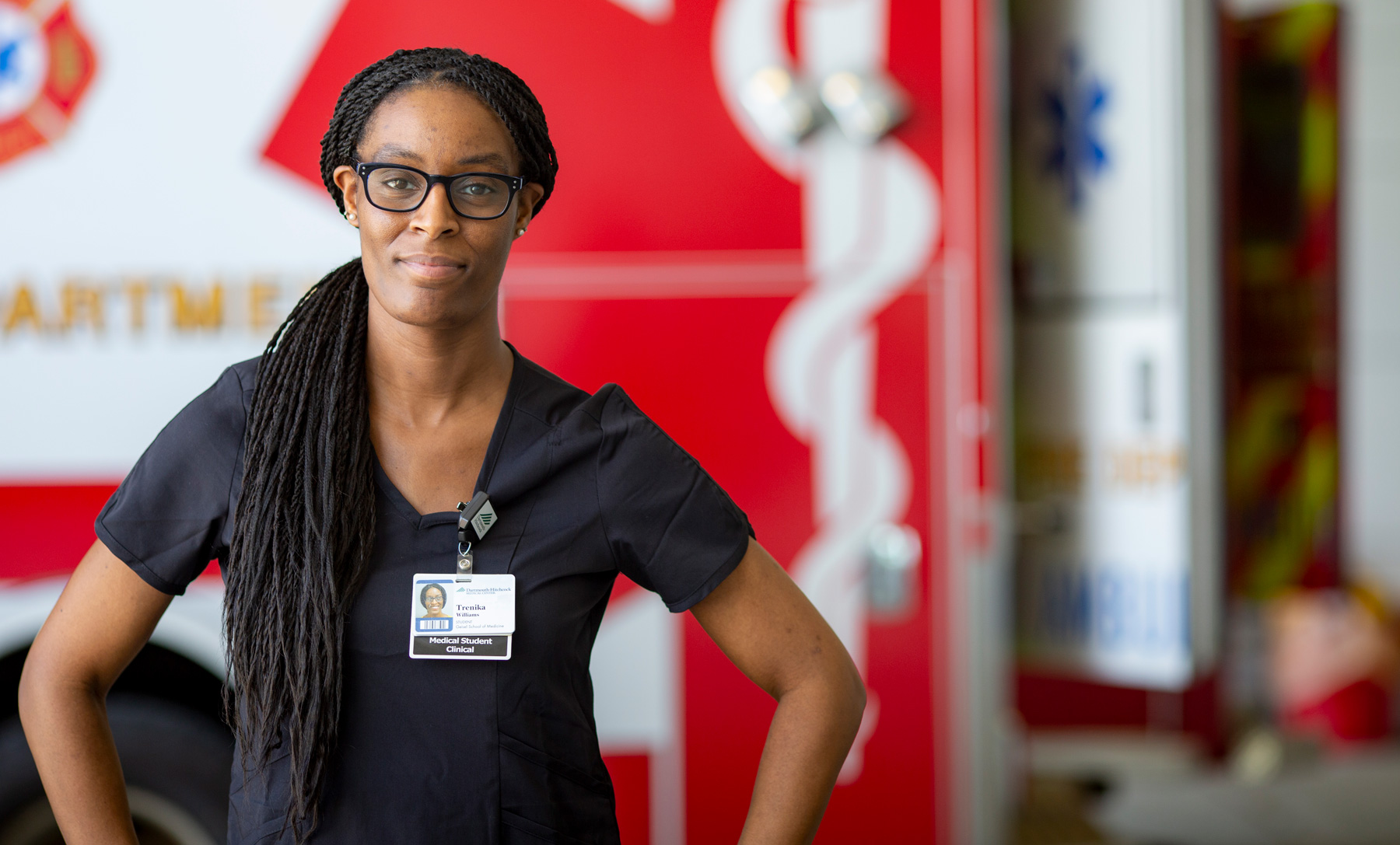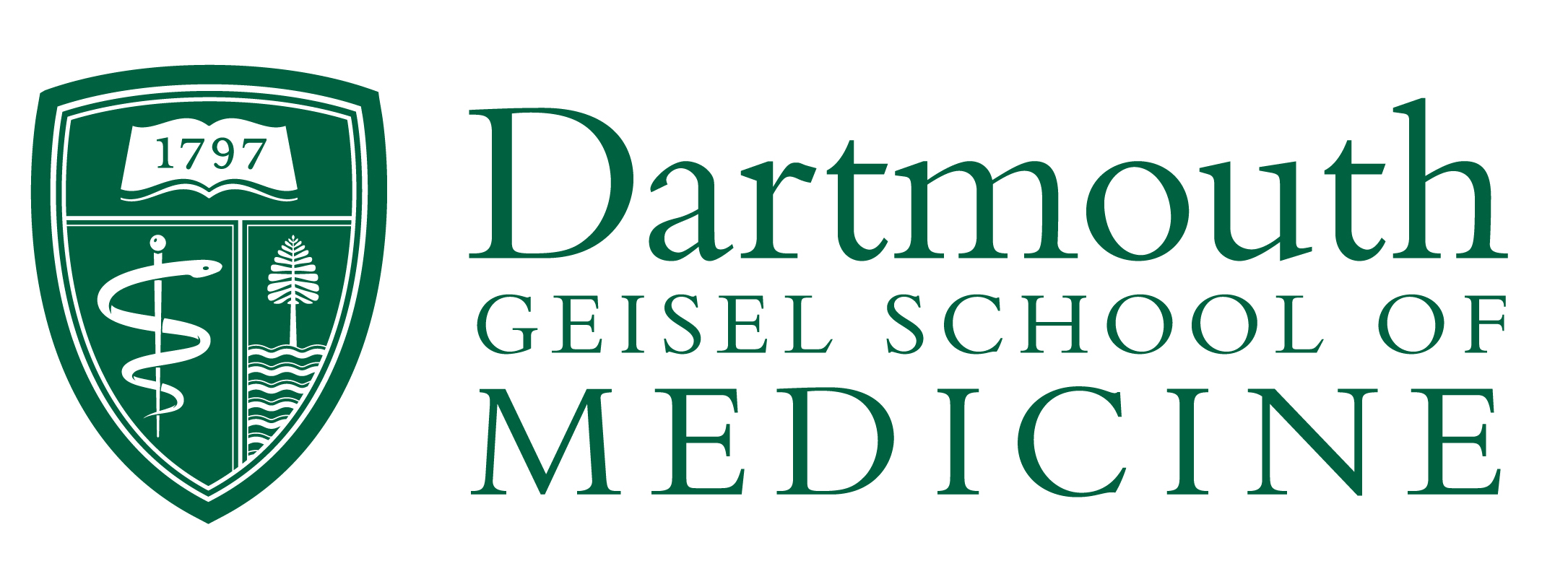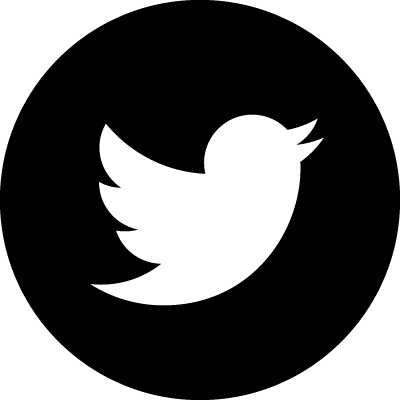Last year when medical school graduates entered residency training, many were unsure of what to expect because the pandemic had dramatically changed patient care. Images of healthcare workers wearing full personal protective equipment (PPE) in overcrowded hospital emergency departments dominated the news. Though eager to help, young clinicians worried about being overwhelmed.
Interviews for residency programs swiftly switched from personal to virtual. Eliminating the need to travel compressed the time between application review and an invitation to interview — changes that increased both the applicant pool and competition for coveted training programs—raising the stakes for acceptance.
Without in person interviews, training programs needed to figure out how to personalize the virtual experience while remaining competitive.
Three recent Geisel School of Medicine graduates in emergency medicine residencies, two beginning their second year and one beginning the first, reflect on the past year.
Trenika J. Williams MED ’21
A first-year resident in the University of Chicago Emergency Medicine Program, Williams is committed to providing patients with unobstructed access to care. Grounded in community activism, she sees emergency medicine as a bridge to health equity and community empowerment.

Raised by a social worker, I was introduced to health and socioeconomic disparity early on. This influenced my desire to pursue medicine and the lens through which I view it. The summer after my first year of medical school, I had the opportunity to participate in Dr. Rob Gore’s Minority Medical Student Emergency Medicine Summer Fellowship at SUNY Downstate/Kings County Hospital in East Flatbush, Brooklyn. From clinical encounters to community advocacy efforts, to programs addressing structural barriers and increasing access to care, I found emergency medicine to be the clear link I’d been looking for between clinical medicine and health equity, grounded in community activism.
What I love most about the emergency room is its role as a safety net, providing patients with unobstructed access to care. As an emergency physician, I will be able to stand in the gap, caring for patients acutely and connecting them with resources to address the social determinants affecting their wellness. In this way, I can make a meaningful impact on my community. Within emergency medicine, I see a clear avenue through which I can continue my commitments to service, health equity, advocacy, mentoring, and community empowerment. Among the field’s leaders, I have found a community of physicians committed to championing my same ideals.
This year’s virtual residency interview process was unpredictable and ever evolving. Given the challenges of the virtual environment, it was clear throughout the season that both applicants and programs were constantly learning how to improve the experience. One thing I really appreciated was that some programs took student suggestions to heart and altered their processes in real time. For example, a friend of mine at another medical school interviewed with a program early in the season then provided feedback on how to improve the pre-interview social. By the time I interviewed with that same program weeks later, some of her suggestions had been incorporated and we had a great social. That affected the way I viewed that program—it signaled to me that if they valued applicant input, they would value my input as a trainee as well.
One aspect of the residency interview season that is consistently anticipated is meeting fellow applicants along the interview trail and I was really looking forward to that. But when everything switched to a virtual format, I was disappointed about missing that experience and wondered how I would meet those who may be future coworkers. I was elated to find a group of medical students had taken the initiative to start a GroupMe for emergency medicine applicants and crowd-sourced adding members throughout the interview season. Through our shared experiences the group became my greatest support, and our family grew as we reencountered each other during each virtual social and interview—it was amazing that we were able to build a sense of community despite not meeting in person. We continued supporting one another—celebrating as we’ve each graduated from our respective medical schools. This was a pleasantly surprising outcome of virtual interviewing.
There is a phenomenal group of caring, compassionate interns beginning their residencies in emergency departments across the U.S.—I’m blessed to call them colleagues and friends who I look forward to working with for the duration of our careers.
I matched into emergency medicine at the University of Chicago—it was my first choice because of how well their values match my own. For my training, I want an environment that will nurture my growth as a clinician, leader, and educator; share my commitment to diversity and equity; and provide opportunities for community involvement beyond clinical medicine. I’m looking forward to both the challenges and growth I will experience during my time there.
Reza Hessabi MED ’20
A second-year resident in the UCLA-Ronald Reagan/Olive View Emergency Medicine Residency Program, Hessabi is committed to diminishing the negative effects of health inequities by advocating for changes in healthcare policy.

Everyone expects residency to be difficult, but because of the pandemic I wasn’t sure what to expect other than I’d be swamped with work. In March 2020, New York City was hit hard—photos of body bags and images inside hospital emergency departments saturated the news. I expected a similar situation in Los Angeles.
There were several times early in my residency when I felt overwhelmed. It was in the Intensive Care Unit during the COVID summer surge—my first rotation as a new doctor with 10, sometimes more, patients in my care every day. I was responsible for making sure they didn’t crash and die. It was a huge responsibility. Prior to starting medical school, I made sure I had access to mental health resources, and I’m lucky to be in a program where residents have access to those resources.
In addition to caring for patients, everyone was worried about infection, which is why we were so vigorous about wearing PPE. In the ER, because we treat all incoming patients, wearing PPE was our daily attire. But as we learned more about COVID and how it spread, we wore PPE only when assessing patients with either a severe cough, expressed shortness of breath, or high fever—and always in a separate room.
COVID cases have significantly slowed down here; I haven’t treated a COVID patient in the past few months. That isn’t to say it has gone away. Olive View Medical Center, one of three county hospitals in Los Angeles County, is where I’ve seen the largest number of COVID patients because minority and disparaged populations have been hardest hit. But there, too, cases have diminished.
Being in a program that has a 50-50 split between a large academic medical center in a wealthier area of Los Angeles, and a county hospital in an impoverished one near Los Angeles, has brought health disparities that are so devastating for Black, brown, and poor populations into sharp focus for me.
Because of the split rotations, at UCLA I see organ transplant patients, patients with genetic diseases, patients who the only doctor they can see is at UCLA. These patients are remarkably sick, but they have a great plan of care, and as their emergency physician I can plug into that plan to help them during their emergency situation.
At Olive View, I see more chronic and common illnesses—people with appendicitis, people who need gallbladders removed, people who have severe liver damage. There were so many people who were so sick, and not just with COVID, but people with chronic conditions who initially stayed away from the hospital even though they knew they were sick. They waited because they were either afraid of COVID or there were people who told them to stay away from the hospital. And because they had waited, their disease worsened to the point where we weren’t able to help them.
During many ER shifts, I had goals of care conversations with patients and family members—something that isn’t typically done in the ER. I’m grateful that during some of my rotations in medical school I had experience with end-of-life discussions. It’s still difficult to tell someone their family member has become progressively sicker over time, and they may not leave the hospital ever again. Despite having those challenging and emotionally exhausting conversations during every shift, I feel that it was valuable learning that skill as a first-year resident.
Now that COVID cases are declining, I’d say that residency in a time of COVID prepared me for my second-year rotations.
To medical students preparing for or beginning residency, it is more important to recharge yourself with whatever fulfills you. That extra ICU elective you take will not better equip you because your full-fledged responsibilities as a doctor are quite different. The workload is different. Focus on developing aspects of identity unrelated to medicine—because that is what will sustain you as you navigate the healthcare system.
Julie Voydik MED ’20
A second-year resident in the Dartmouth-Hitchcock Emergency Medicine Residency Program, Voydik served as an Army medic in Iraq for one year—she credits that experience as integral to her aim of remaining grounded in compassion and humanity amid the flurry of emergency medicine.

Prior to beginning residency training, I thought the structure of residency as I expected and heard about would be totally thrown out the window depending on the COVID situation in our area.
But here in the rural Upper Valley, by virtue of our geographic location, we were lucky compared to the rest of the country. We had surges, and there were time periods when I saw several COVID patients during my shift, but we were less physically overwhelmed in terms of capacity than other city hospitals were.
Though the structure of residency remained normal, there were a litany of new protocols in place. When patients came into the ED, they were funneled into a negative pressure room for evaluation if they had any COVID-suspicious symptoms. I found myself evaluating patients in rooms with a loud HVAC system, wearing full PPE with a respirator and face shield—communication could be incredibly challenging with elderly or hard of hearing patients, not to mention kids—it’s hard to build rapport with a toddler when you walk in looking like Darth Vader.
I remember my first COVID patient—an elderly women who was quite sick and alone in her room. She was hard of hearing and scared. I was in a respirator and face shield trying to have a conversation with her about her code status—asking her if she wanted CPR or electric shocks if her heart stopped, which can be a distressing and emotionally taxing conversation to have even in the calmest of circumstances. Despite a lot of prior training and discussion about how to navigate these difficult conversations, I never imagined having to do it with this particular set of challenges.
And there were plenty of logistical and practical challenges as well. Every time we went into or out of the patient room we had to don and doff all our PPE, which can be cumbersome and time consuming. Thankfully, we had plenty of practice sessions—when there was a lull in the ED, a senior resident would gather us in a room to simulate an urgent case, going through all possible procedures and logistics, including putting on our PPE, intubating a patient, and communicating with nurses via an iPad outside the room.
Another contributing factor at that time was visitor restrictions—making it difficult for family members to accompany their ill elderly parents who were admitted to the hospital. I recall having a curbside conversation with the daughter of an elderly COVID patient who was not doing well. She mentioned seeing news stories about people who dropped off parents at the hospital then never saw them again—she wanted to know if that was going to happen to her. I said I didn’t know.
These difficult conversations took place even as case numbers lowered; while you don’t want the patient to be alone and their family to be distraught, visitors raise the risk of further exposure.
Worrying about infection was also stressful, especially since I have a 9-year-old at home. The level of relief I felt after receiving the vaccine made me realize how taxing it was to worry about catching the virus. But before entering a patient room, I’d still have a fleeting, high alert anxious feeling, then I’d remember I’m vaccinated. We still need to take the same precautions, but the mental burden of worrying is significantly alleviated.
I think everybody in emergency medicine develops their own cognitive and emotional framework for how to interpret and live with the tragedies we see—there will always be cases that never leave you. Bearing witness in this way to human suffering is a heavy weight, but also a privilege. In the spirit of being able to continue doing our job, giving thought to these burdens, and talking to others in our field is helpful. I’ve had plenty of those conversation during long night shifts when I thought I had reached my limit of witnessing tragedies.
After leaving the Army, I went to medical school intending to become an emergency medicine physician—I never seriously considered anything else. It is a perfect fit for me and one year of residency hasn’t changed my mind.
To first-year residents, I say trust your training and hold onto your compassion and humanity with intention in the flurry of providing care. Develop close relationships with fellow residents—it’s crucial to support each other and to give voice to the emotions that invariably come from both the beautiful and terrible things that we all see.




